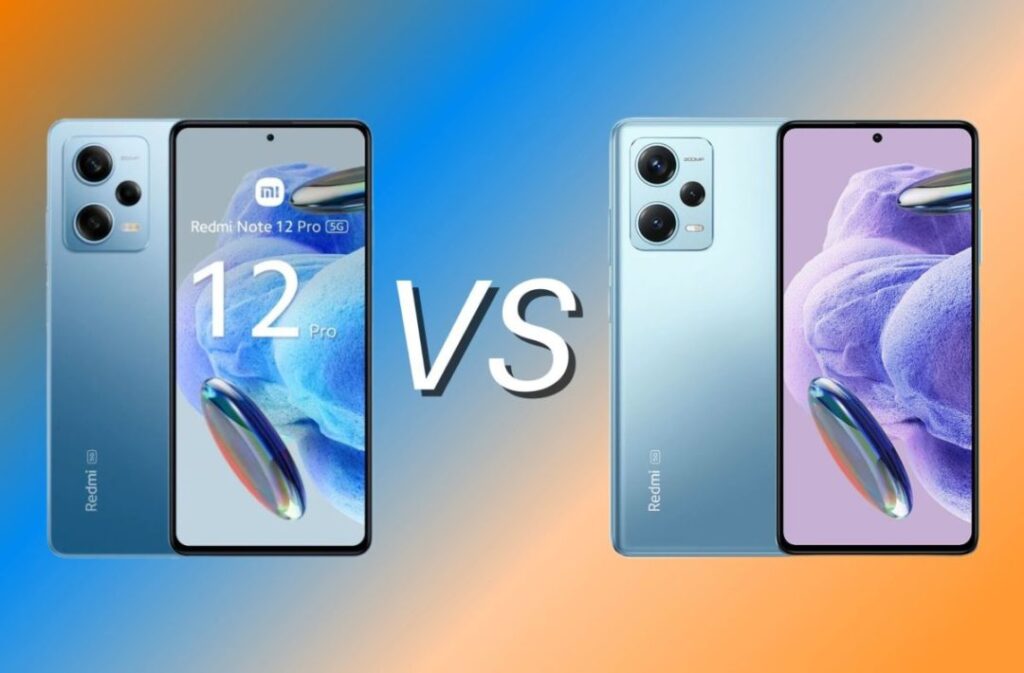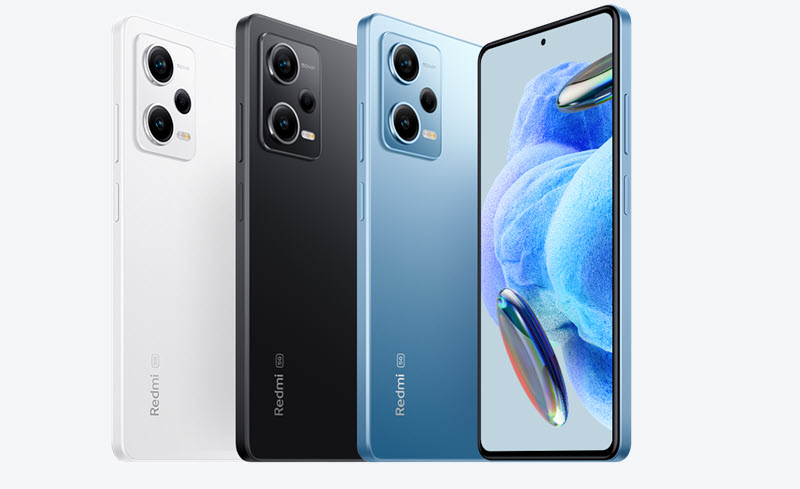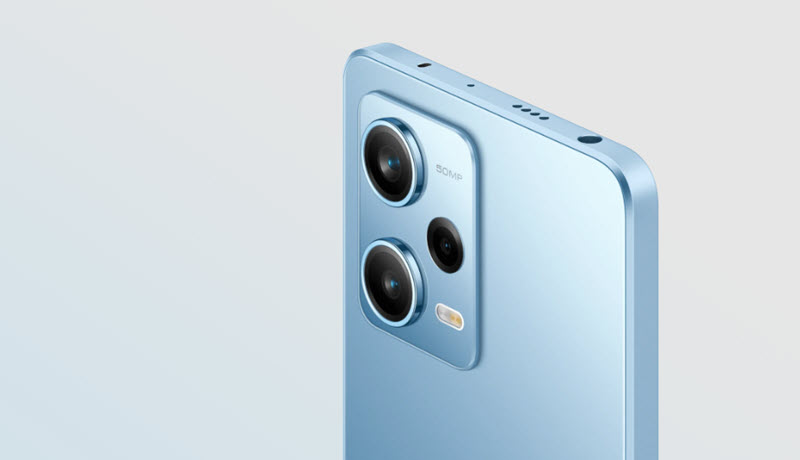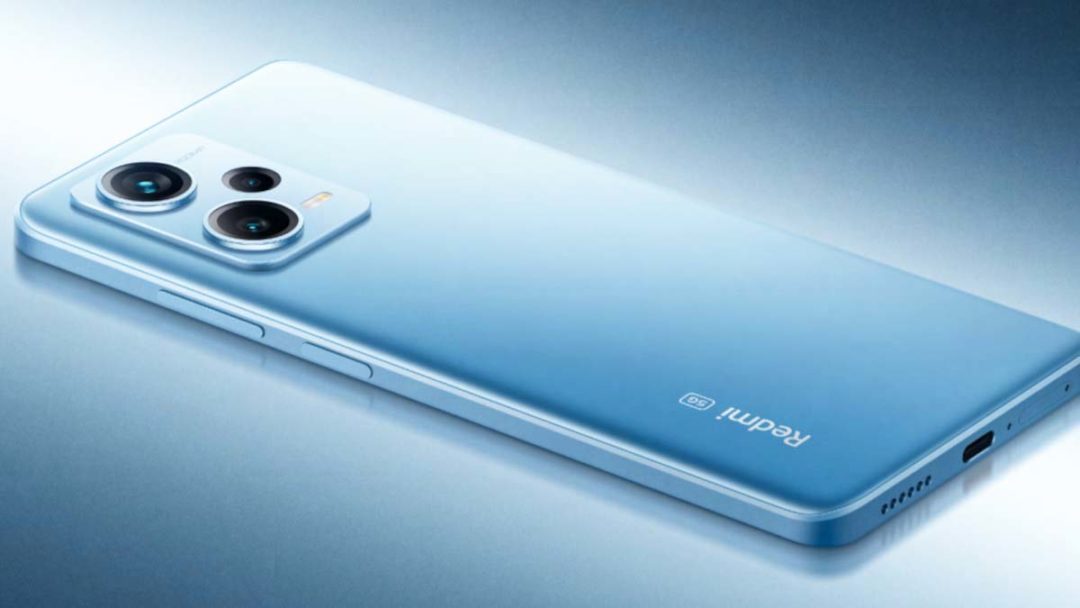Smartphones & Tablets | June 11, 2023

| Xiaomi Redmi Note 12 Pro | Xiaomi Redmi Note 12 Pro Plus | |
| Screen | 6.67 inches of AMOLED technology, 20: 9 format, FullHD + resolution of 2,400 x 1,080 pixels, adaptive refresh rate of up to 120 Hz, touch sampling rate of 240 Hz, maximum brightness of 900 nits, HDR10 +, Dolby Vision and Corning Gorilla glass Glass 5 | 6.67 inches of AMOLED technology, 20: 9 format, FullHD + resolution of 2,400 x 1,080 pixels, 120 Hz refresh rate, 240 Hz touch sampling rate, maximum brightness of 900 nits, Dolby Vision, HDR10 + and Corning Gorilla Glass 5 glass |
| main chamber | – 50-megapixel main sensor with f/1.9 focal aperture capable of recording video in 4K resolution at 30 frames per second – Secondary sensor with 8-megapixel wide-angle lens with f/2.2 focal aperture and 120° field of view – Tertiary sensor with 2-megapixel macro lens with f/2.4 focal aperture | – 200-megapixel main sensor with f/1.7 focal aperture with 4K video recording capability at 30 frames per second – Secondary sensor with 8-megapixel wide-angle lens with f/2.2 focal aperture and 119° field of view – Tertiary sensor with 2-megapixel macro lens with f/2.4 focal aperture |
| selfie camera | 16-megapixel main sensor with f/2.5 focal aperture with video recording capability in FullHD 1080p resolution at 60 frames per second | 16-megapixel main sensor with f/2.5 focal aperture with video recording capability in FullHD 1080p resolution at 60 frames per second |
| Internal memory | 128 or 256 GB type UFS 2.2 | 256 GB type UFS 2.2 |
| Extension | not expandable | not expandable |
| Processor and RAM | – Mediatek Dimensity 1080 6 nanometers and eight cores at 2.6 GHz max. – 6 or 8 GB of LPDDR4 type RAM | – Mediatek Dimensity 1080 6 nanometers and eight cores at 2.6 GHz max. – 8 GB of LPDDR4 type RAM |
| Battery | 5,000 mAh with support for 67W fast wired charging (charger included in the box) | 5,000 mAh with support for 120W fast wired charging (charger included in the box) |
| OS | Android 12 under MIUI 14 | Android 12 under MIUI 14 |
| Connections | 5G, 4G LTE, Wi-Fi 802.11 b/g/n/ac/6 dual-band, Bluetooth 5.2, GPS + GLONASS, NFC for contactless payments, USB Type-C input and 3.5-mm headphone jack | 5G, 4G LTE, WiFi 802.11 a/b/g/n/ac/6 dual-band, Bluetooth 5.2, GPS with A-GPS and GLONASS, NFC for contactless payments, 3.5-mm jack input for headphones and USB type C input |
| SIM | Dual nano SIM | Dual nano SIM |
| Design | Colors: purple, blue and black | Colors: black, white and blue |
| Dimensions and weight | 163 x 76.03 x 7.98 millimeters and 187 grams | 162.9 x 76 x 9 millimeters and 210 grams |
| Featured Features | Side-mounted fingerprint sensor, stereo speakers with Dolby Atmos, infrared sensor for control of external devices, and IP53 water resistance (splashproof) | Optical fingerprint sensor under the screen, facial recognition, stereo speakers with Dolby Atmos, infrared sensor and IP53 water and dust resistance (splash proof) |
| Release date | Available | Available |
| Price | From 230 euro | from 340 euros |
The Xiaomi Redmi Note 12 Pro and 12 Pro Plus are among the most advanced and cost-effective mid-range smartphones of the moment. Both were introduced in mid-March and have since become two of the most interesting options in the segment. As they belong to the same mobile family, they share several features and have similar prices. However, as expected, they have some significant differences in terms of specifications. To determine which one is better and why, let’s compare the Xiaomi Redmi Note 12 Pro vs 12 Pro Plus head-to-head in this review. Which one will come out on top? Let’s find out…

The Xiaomi Redmi Note 12 Pro and 12 Pro Plus are very similar to each other… in fact, they are identical! Not only do they share the same rear and front design, but they also have practically the same dimensions, although the weight of both is different, with the Redmi Note 12 Pro being considerably lighter, weighing about 23 grams less than the Redmi Note 12 Pro Plus.
However, when it comes to construction and materials, we still don’t find major differences, as both have a back made of polycarbonate (plastic), along with straight frames, providing a similar hand feel.
In terms of the displays of these devices, there are no major differences between the Xiaomi Redmi Note 12 Pro and 12 Pro Plus. In fact, both have the same display, which is an AMOLED technology with a size of 6.67 inches. It has a Full HD+ resolution of 2,400 x 1,080 pixels, an aspect ratio of 20:9, and a refresh rate of 120 Hz. It also has a touch sampling rate of 240 Hz and can reach a maximum brightness of 900 nits. Additionally, it is compatible with Dolby Vision and HDR10+ standards, and is protected by Corning Gorilla Glass 5.

The performance of both smartphones is quite decent, as expected. Being two of the most advanced mid-range devices of the moment, they come with one of the best processors in the segment. And yes, both the Xiaomi Redmi Note 12 Pro and Redmi Note 12 Pro Plus come with the same chipset, so we don’t find any significant difference in terms of power in this aspect.
The processor housed inside these devices is the MediaTek Dimensity 1080, a 6-nanometer chipset that features eight cores clocked at a maximum frequency of 2.6 GHz. Thanks to this component, the user experience provided by the Xiaomi Redmi Note 12 Pro and 12 Pro Plus is generally fast and smooth.
Regarding memory options, both come with 8 GB of LPDDR4 RAM and 256 GB of UFS 2.2 internal storage, which cannot be expanded via a microSD card. However, only the Xiaomi Redmi Note 12 Pro is also offered with 6 GB of RAM and 128 GB of internal storage.

We continue with the comparison of the Xiaomi Redmi Note 12 Pro vs 12 Pro Plus. Now let’s talk about their cameras, an area where we have only one significant difference, and it’s related to the main sensor of both devices.
The Xiaomi Redmi Note 12 Pro features a 50-megapixel primary lens with an aperture of f/1.9. On the other hand, the Redmi Note 12 Pro Plus boasts a higher-resolution sensor of 200 megapixels with an aperture of f/1.7. This not only offers larger photos but also captures more light, even in low-light conditions such as nighttime. Both sensors can record videos in 4K at 30 frames per second.
Since they both have triple rear cameras, they come with two additional sensors on the back, and in both cases, they are the same. The secondary lens is an 8-megapixel ultra-wide-angle lens with a 120° field of view and an aperture of f/2.2. The third and last sensor is a 2-megapixel macro camera with an aperture of f/2.4.
As for the front cameras, both mid-range devices have the same sensor. The shared front sensor on the Xiaomi Redmi Note 12 Pro and 12 Pro Plus is a 16-megapixel lens with an aperture of f/2.5. It can record Full HD+ 1080p videos at 60 frames per second.

Analyzing further the differences between the Xiaomi Redmi Note 12 Pro Plus vs 12 Pro, we have found that they have the same 5,000 mAh battery capacity but with different charging speeds. In this regard, the Redmi Note 12 Pro Plus is considerably superior to the 12 Pro, as it features 120W fast charging compared to the 67W charging of the latter. This means that while the Redmi Note 12 Pro Plus takes about 20 minutes for a full charge, the Redmi Note 12 Pro needs to be connected to the charger for about 50 minutes. Fortunately, both devices include the original charger in their sales package.
In terms of connectivity, both devices share the same options, including support for 5G networks, dual-band Wi-Fi 6, Bluetooth 5.2, GPS with A-GPS and Glonass, and NFC for contactless mobile payments. They also come with a 3.5mm headphone jack, a USB Type-C port, and an infrared sensor for controlling home devices such as TVs and air conditioners.
Regarding other features, the Xiaomi Redmi Note 12 Pro and 12 Pro Plus have dual stereo speakers with Dolby Atmos, an in-display optical fingerprint reader, facial recognition, and IP53 water resistance against splashes (not submersible). They come with Android 12 under the MIUI 14 Global interface and will be upgradable to Android 13 in the near future.
We have now reviewed all the differences between the Xiaomi Redmi Note 12 Pro vs 12 Pro Plus, so let’s take a look at their prices.
The Redmi Note 12 Pro has a starting price of around 230 euros at the time of publishing this article. Meanwhile, the 12 Pro Plus is slightly more expensive, starting from 340 euros. This leaves us with a difference of over 100 euros in favor of the Redmi Note 12 Pro, making it the winner. With this in mind, we can say that the winner of this comparison between the Xiaomi Redmi Note 12 Pro Plus vs 12 Pro is none other than the Redmi Note 12 Pro, and here’s why:
The Xiaomi Redmi Note 12 Pro wins this comparison thanks to its superior value for money compared to the Redmi Note 12 Pro Plus. The 12 Pro Plus is only better in two aspects: the camera and battery. This device has a higher-resolution main camera and more powerful fast charging. Otherwise, it shares the rest of the features and technical specifications with the Redmi Note 12 Pro.
In other words, the Redmi Note 12 Pro Plus does not justify, in any way, being much more expensive than the Redmi Note 12 Pro. However, if having a higher-resolution camera and faster charging is important to you, and you don’t mind spending around 100 euros more, undoubtedly the 12 Pro Plus is the device you should choose. Otherwise, the Xiaomi Redmi Note 12 Pro is the phone you should buy in 2023.